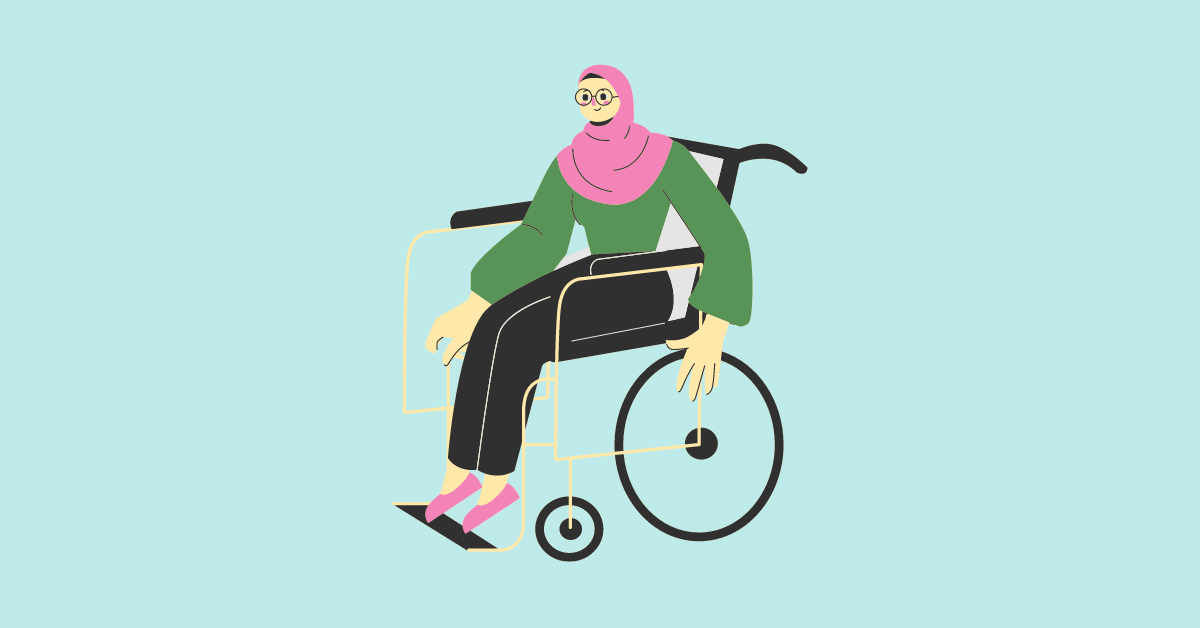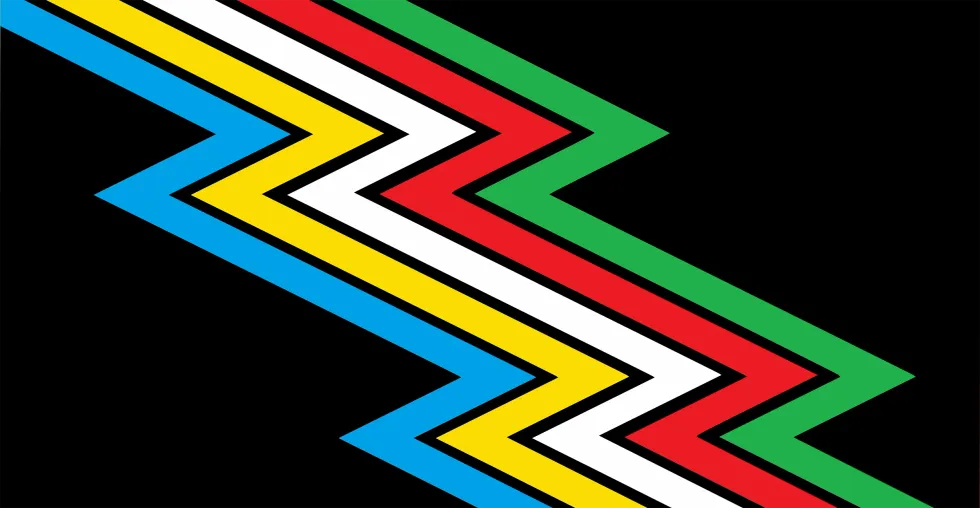“We'd not been given perfection, not godliness, not symmetry, not gracious measurement, not a bad hand, nor a curse; we'd not been given anything other than a life to spend together; our lives, not easy or free from pain; we'd been given only a real life, dreadfully normal and sublime, and I would no longer betray its beauty by wishing it otherwise.”
― Chloé Cooper Jones, Easy Beauty
Celebrating Disability Pride Month at work is unlike celebrating many other kinds of pride and heritage months. That’s in part because people with disabilities, particularly those with invisible disabilities, can be resistant to disclosing their disability status in the first place, due to stigma, a lack of understanding, or the perceived potential for both.
A full 76% of employees with disabilities, in a global survey, report not fully disclosing their disabilities at work. That number goes up to 80% for C-suite executives and their direct reports. And that’s exactly why a celebration of this kind is needed. Since Disability Pride Month was first officially observed in 2015, it’s represented a great leap forward in creating a more equitable world for people across abilities.
Of course, eliminating ableism from our workplaces requires committed, sustained effort. But for leaders looking to build more inclusive and accessible work cultures, observing Disability Pride Month is a good place to start. Below, we’ll explore ways to do just that. And we’ll also cover some steps to becoming a better ally to disabled people, with recommended books for allies to read and key takeaways we can glean from the Disability Pride Flag story, so that you can continue with this work long after this Disability Pride Month has passed.
When is Disability Pride Month?
In the United States, Disability Pride Month is celebrated every July to commemorate the July 1990 passing of the Americans with Disabilities Act (ADA). This landmark legislation made it illegal for employers to discriminate against candidates or employees on the basis of disability, and also guaranteed equal opportunity in public transit, state and local government services, and telecommunications services for folks with disabilities. (That’s right; these rights weren’t legally protected until 1990.)
Disability Pride Month, or related disability-tied awareness months or days, are also recognized in many different parts of the world. In the U.K., Disability Pride Month is celebrated in July, Disability Awareness Day is recognized September 16th, and Disability History Month is recognized from mid-November to mid-December. Globally, May 2nd is Global Accessibility Awareness Day. There’s also a long list of days and months, globally and nationally, in recognition of a specific disability. For example, April 2nd is World Autism Awareness Day, and World Day of the Deaf is recognized on the last Sunday of September.
7 ways to celebrate Disability Pride Month at work
A key complaint among many in the disabled community is that “monthly observances” can feel performative. Use this month, then, as an opportunity to take authentic, tangible steps forward in disability inclusion.
1. Implement accessible technology.
Accessible technology helps people with a wide range of functional abilities. Consider doing an accessibility audit of your current tech; is it suitable for the visually impaired and those easily triggered by saturated colors? If not, invest in assistive tech like screen readers, voice recognition software, and captioning services.
2. Host a speaker series.
Invite people with disabilities to share their lived experiences. These individuals can be employees, leaders, or external speakers. Encourage open dialogues and Q&A sessions where people can learn in a safe space.
3. Introduce (or improve on your) inclusive communication.
A great way to begin creating more inclusive spaces for the disabled community is to implement inclusive language in internal and external communication. Get your communications department to roll out resources on best practices, and also include these in your employee handbooks. Offer training sessions to your employees and normalize reminding and encouraging employees to practice these guidelines.
4. Advocate for Universal Design.
The official definition of Universal Design is that it’s “the process of creating environments, products, and services that are accessible, understandable, and usable to the greatest extent possible by all people, regardless of their age, size, ability, or disability.” Its principles include equity, simplicity, and flexibility in use, as well as a high tolerance for mistakes.
Collaborate with teams to ensure accessibility in both physical and digital spaces, and engage a Universal Design expert if required.
5. Promote disability-friendly or community-owned businesses.
Dedicate the month to supporting local businesses owned by folks with disabilities; this could also extend to suppliers and business partners. You can find such businesses near you through the directories provided on the Intentionalist and the U.S. Disability Chamber. Make a list available to your employees and encourage them to patronize these organizations.
6. Implement Mental Health Days.
Encourage employees to take regular self-care days to look after their mental health. This should be something that you allow on a regular basis, but announcing or formalizing mental health days in recognition of this month can help give you insight into how well your employees are doing psychologically — and if there’s anything you can do at work to improve things. Encourage managers to lead by example by taking self-care days themselves, so that there’s no stigma attached.
7. Organize a fireside chat with disabled employees.
A fireside chat with members of the disabled community in your office should be a respectful and open conversation where employees can discuss their challenges and experiences. It should cover workplace accessibility, career development opportunities, company policies, and training programs. This would be a great place to tap your disability-tied Employee Resource Group (ERG), and ensure that employees from these groups who are asked to lead or organize Disability Pride Month activities are compensated for their time and expertise. Don’t have a disability ERG? Maybe this is your sign to launch one!
How to be a better ally to disabled people
In order to be a better ally year-round to disabled people, one needs to first be aware of a form of often unconscious bias called ableism.
What is ableism?
Ableism is the concept and practice of placing superior value on certain types of bodies, brains, forms of communication, and certain ways of being over others. The systems and places in which we live have been created for non-disabled bodies and neurotypical minds. The world doesn’t make room for people that don’t fit those labels. These could be individuals with physical, developmental, learning, psychiatric, and sensory disabilities.
Many people with ableist beliefs may not even be aware of their biases. Here are a few ways ableism manifests:
- Discrimination in hiring: A company may avoid hiring people with visible disabilities due to unfounded assumptions about their abilities.
- Inappropriate language or jokes: This takes the form of making insulting remarks about disability or using it as a negative metaphor. For example, words like “lame excuse,” “retarded,” or “insane” do this.
- Microaggressions: This could look like speaking to a coworker in a patronizing tone or offering unnecessary help. Statements like "You're so brave and inspiring for doing your job despite your disability" presume that living and working with a disability is first and foremost a struggle or pitiable.
How you can start being a better ally
We got in touch with Keryn Seal, a paralympian and sales professional, to learn what people can do to start being better allies to their disabled colleagues at work.
1. Recognize the difference between the medical and social model of disability.
“We still hear people talk about disability as something to overcome medically. The social model points to society being the barrier to the disabled becoming fully participating and contributing members of our society,” Seal says.
2. Mind your language.
“We hear language of somebody ‘suffering with’ or ‘battling against’ blindness or cerebral palsy, or ‘wheelchair bound.’ This language permeates what people underlyingly think about disabled people, as if our disability is something to overcome ourselves.”
3. Don’t be afraid to use the word “disabled.”
“Something that grinds my gears is when people are scared to use the word disabled. We need to take that word back, as it’s a part of a person’s identity. We often hear people say ‘differently abled’ or ‘superhuman.’ Disabled is fine. It’s a term we are comfortable with.”
4. Ask how you can help.
“I had a job interview recently where the interviewers asked me if there was anything they could do to make the interview experience easier or more accessible,” Seal says. “Something as simple as somebody asking a question like that is a huge step.”
Want to keep learning? Read these five books:
- “Easy Beauty” by Chloé Cooper Jones (Amazon)
- “Care Work: Dreaming Disability Justice” by Leah Lakshmi Piepzna-Samarasinha (Amazon)
- “If At Birth You Don't Succeed: My Adventures with Disaster and Destiny” by Zach Anner (Amazon)
- “Mental: Lithium, Love, and Losing My Mind” by Jaime Lowe (Amazon)
- “Disability Visibility: First-Person Stories from the Twenty-First Century” by Alice Wong (Amazon)
The Disability Pride Flag
The story of the Disability Pride Flag is exemplary of intentional inclusion.
When Ann Magill first designed it in 2019, the flag was black with five parallel zigzag stripes of light blue, gold, white, red, and green separated by narrow black borders. It looked like this:Magill noticed in the middle of 2021 that even with desaturated colors, the zigzag design created a strobe effect that could cause migraines and epilepsy among sufferers when viewed online.
So what did Magill do?
She collaborated with the disabled community on Tumblr and came to a consensus on the current design, which is charcoal gray with simpler motifs. Magill rearranged and edited the brightness of the colors to make a flag that is not just symbolic of disability awareness, acceptance, and inclusion, but also an example of it.
This is the flag today:
This story teaches us that inclusion isn’t something you get right the first time — everyone makes mistakes. The flag serves as a reminder to keep striving for inclusion, and that we can all work together to create a more inclusive and accessible world. Find more resources for applying Diversity, Equity, Inclusion, and Belonging best practices to your workplace in our employer learning hub.





